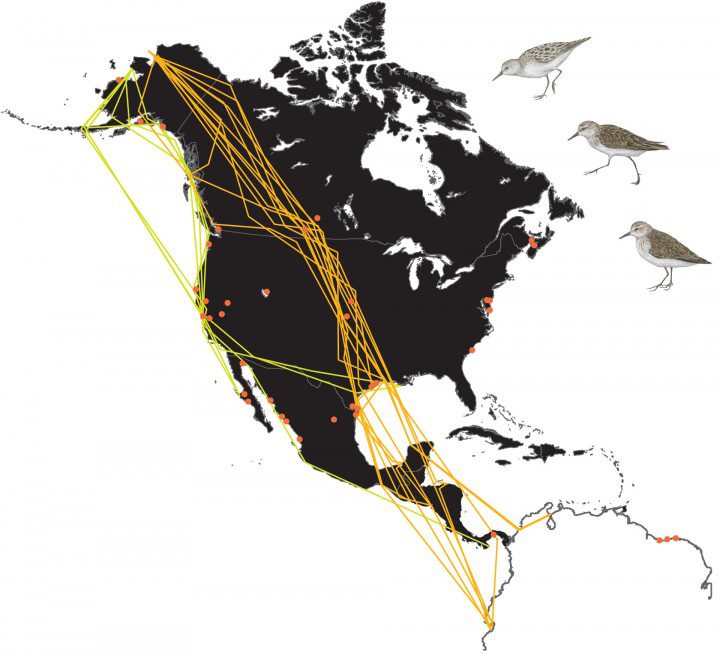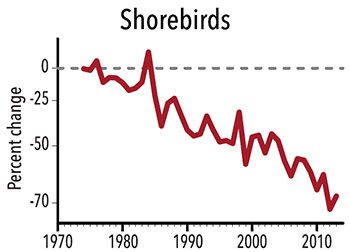Coasts

Safe harbors needed for intercontinental migrants
Coastline habitats where land meets sea are important to many species of birds. Some species depend on coastal habitats for breeding. Other species, especially shorebirds, migrate vast distances from Arctic and boreal breeding grounds to South America, stopping at a chain of key coastal migratory stopover habitats along the way to rest and refuel. Some of the most important sites support hundreds of thousands of migrant shorebirds. Loss or degradation of any one of these sites can lead to dramatic declines in populations.
Status: Threats to coastlines take a toll on birds
About 40% of the more than 100 species that depend on coastal habitats are on the Watch List. Species that breed in mangroves, saltmarshes, and sandy beaches are of highest concern due to pressures from sea-level rise, coastal development, disturbance from human recreational activities, and the threat of oil spills.

Many coastal species have small population sizes and a restricted distribution, making them especially vulnerable to habitat loss and other threats.
The migratory shorebirds that travel the farthest are showing the greatest declines. Habitat loss and degradation at key coastal stopover sites, as well as climate change impacts on northern breeding grounds, may all be affecting their populations.
Building on Success: Sister cities united by shorebirds
The Linking Communities initiative has established a shorebird sister-city relationship among communities near Important Bird Areas in Saskatchewan, Utah, and Nayarit. The initiative coordinates shorebird festivals, cultural exchanges for schoolteachers, and conservation projects in each community. Similar linkages could be developed elsewhere to coordinate conservation efforts among important sites that share populations of migratory birds.
Take Action: Conserve coastlines for birds and people

Local governments have a key role to play in coastal bird conservation:
- The Western Hemisphere Shorebird Reserve Network has identified almost 100 key migratory sites from Alaska to Tierra del Fuego. Local governments can support these crucial shorebird habitats with zoning and policies to protect them from disturbance and development.
- Mangroves and saltmarshes that support coastal bird species also protect coastal cities from flooding and sequester large amounts of carbon. Governments can recognize these important ecosystem services through legislation that prevents further loss of coastal ecosystems and encourages their restoration.
